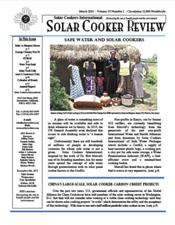Preventing cryptosporidiosis: the need for safe drinking water. Bulletin of the World Health Organization, April 2013.
Rachel Peletz a, Thomas Mahin b, Mark Elliott c, Margaret Montgomery d & Thomas Clasen a
a. London School of Hygiene and Tropical Medicine, Keppel Street, London, WC1E 7HT, England.
b. Massachusetts Department of Environmental Protection, Boston, United States of America (USA).
c. University of Alabama, Tuscaloosa, USA.
d. World Health Organization, Geneva, Switzerland.
Correspondence to Rachel Peletz (e-mail: RachelPeletz@gmail.com).
Bulletin of the World Health Organization 2013;91:238. doi: http://dx.doi.org/10.2471/BLT.13.119990
Abstract
Cryptosporidium is one of the most widespread intestinal parasites and a common cause of severe diarrhoea in immunocompromised people and young children. Cryptosporidium can be found in surface and groundwater sources susceptible to flooding or faecal contamination, and may be present in piped “improved” drinking water systems that use these water sources. Opportunistic infections with Cryptosporidium can cause cryptosporidiosis, a potentially severe and life-threatening illness.
Cryptosporidiosis was one of the defining illnesses for acquired immunodeficiency syndrome (AIDS) before the discovery of the human immunodeficiency virus (HIV). In 1993 in Milwaukee, Wisconsin, a Cryptosporidium outbreak resulted in 400 000 infections and 50 deaths. A review of 46 studies of chronic diarrhoea in people living with HIV in low-resource settings identified Cryptosporidium as the most common waterborne pathogen associated with chronic diarrhoea and its increased risk of mortality. Most cases of HIV are in sub-Saharan Africa, the region that ranks last in sanitation coverage and next to last in safe drinking water coverage.




